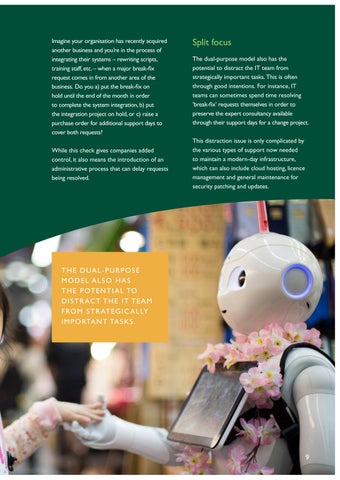Imagine your organisation has recently acquired another business and you’re in the process of integrating their systems – rewriting scripts, training staff, etc. – when a major break-fix request comes in from another area of the business. Do you a) put the break-fix on hold until the end of the month in order to complete the system integration, b) put the integration project on hold, or c) raise a purchase order for additional support days to cover both requests? While this check gives companies added control, it also means the introduction of an administrative process that can delay requests being resolved.
Split focus The dual-purpose model also has the potential to distract the IT team from strategically important tasks. This is often through good intentions. For instance, IT teams can sometimes spend time resolving ‘break-fix’ requests themselves in order to preserve the expert consultancy available through their support days for a change project. This distraction issue is only complicated by the various types of support now needed to maintain a modern-day infrastructure, which can also include cloud hosting, licence management and general maintenance for security patching and updates.
T H E D UA L - P U R P O S E MODEL ALSO HAS T H E P OT E N T I A L TO D I S T R AC T T H E I T T E A M F RO M S T R AT E G I C A L LY I M P O RTA N T TA S K S .
9




